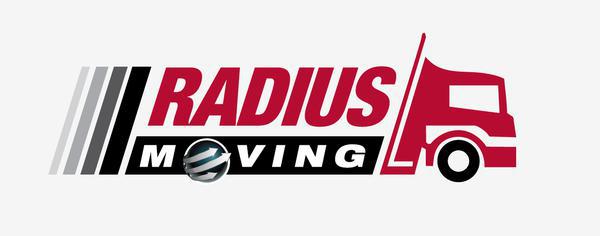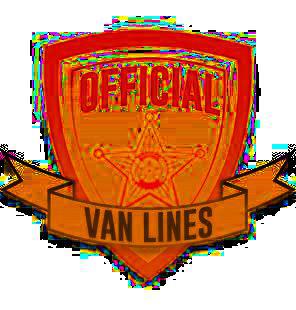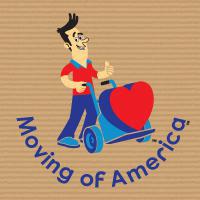New Jersey Movers Top Rated
(888) 787-7813463 Movers in New Jersey
Page 1/31
Check Out These Great New Jersey Movers
Read our interstate New Jersey moving reviews to find the best cross country mover. After searching through our list of New Jersey interstate movers, the task of finding a reputable state to state moving company won't seem so daunting. The best NJ moving companies are sometimes found in local moving company reviews, so don't forget to check those out as well. Let Moving Authority give you a free moving quote. Once you have a New Jersey movers cost estimate, you'll be able to create a budget and get started on your move.NJ moving company reviews are available to help you find an American moving company. When you want to move your furniture or have the best car transport in New Jersey, look no further. Free moving estimates are always attainable with our quote generator. For information about New Jersey long distance movers, local movers, and self service movers, you're in the right place. Scope out a moving cost estimate today, and see how easy your move can be with Moving Authority.
The moving companies NJ advertises as the best are usually your best bet for moving companies in NJ. However, to have the top NJ moving experience, it's recommended to check New Jersey movers reviews. Moving companies New Jersey locals say are worth the money can be found here in peer reviews. Choose your moving company NJ today and get moving!
Confused About the Etiquette of Tipping Movers?
- The question of whether or not to tip movers is hotly debated in this day and age.
- Some argue that movers make a wage from their moving companies and should not need a tip, however the fact of the matter is that wages for movers can be low. Giving them a tip is not paying them extra out of your pocket, but showing them gratitude for a job well done.
- Many people are unsure of how much is appropriate to tip, and there’s really no flat standard as far as gratuities are concerned.
- Factors for the tip include: the level of service you received, how intensive your moving job was, the amount of movers required, the amount of time it took.
- Ultimately, the decision whether or not to tip falls on your shoulders, and the most basic formula for tipping is to give 5%-10% of the total cost of the move.
4 Things To Consider When Estimating the Cost of Your Home Move
- What level of service do you need? You can choose to move with a moving package as basic as a “two men and a truck move” all the way up to a luxurious, full service move. The service level depends on your preference, and will of course vary in price range.
- How far are you going? If you are moving from one place to another locally, your moving costs will be drastically lower than those associated with a long distance or even international move.
- Do you have specialty furniture? Most furniture items are heavy, but there are a few items which fall into a special category that require extra attention. Pieces like grandfather clocks, pool tables, hot tubs, and gun safes will need to be taken care of with extra labor, so it’s important to consider these expenses upfront.
- Will you require storage? If you’re moving into a smaller place and need to stash some things in a storage facility, this will incur an extra charge. Be sure to budget for this prior to your move.
The 5 Most Common Reasons For That Increased Moving Price
- Sometimes, customers receive moving quotes that don’t quite encompass everything you require from a moving company.
- This is no one’s fault, simply a misunderstanding between the customer and the representative from the moving company in NJ that issued the quote.
- If you miscalculate how much stuff you’ll be moving, the price can go up with the added weight.
- A lot of customers don’t realize that when a New Jersey mover has to use stairs or elevators, this can take extra time and, in turn, cost more money in hourly labor charges.
- Reputable moving companies in New Jersey insured their customers’ items at sixty cents per pound, but you can also choose full value insurance on your items for an additional fee, which is something that can raise your price.
- If you suddenly request your movers to unpack your boxes, you’ll be paying for extra labor.
- In the event that you’re not there to meet your movers New Jersey at any point in the journey, you will be charged a waiting fee for the time that they were waiting for you, unable to work.
Little-Known Facts for First-Time Military Moves
- Your movers will come in and pack up everything. You don’t have to lift a finger!
- Make sure to take out ALL trash and ALL unwanted items before your movers get there. Your movers really do pack EVERYTHING.
- Sometimes, it can be easier to have your car shipped with the rest of your household goods instead of driving it yourself. Check with your movers to see how long auto shipping takes.
- Your move will be paid for by your branch of the military, but the military doesn’t provide the tip. If you’re wondering how much you should tip your movers, take a look at the total cost of the move on your contract. If you have received exemplary service, give each mover 10% of the total cost as a tip.
- Check whether your moving company offers GPS tracking of your items. This way, you can see where your stuff is at every step of the journey across the USA, or even the world.
Movers By City in New Jersey
Newark
(585)
Trenton
(292)
Jersey City
(367)
Paterson
(435)
Elizabeth
(465)
Toms River
(97)
Edison
(112)
Lakewood
(22)
Clifton
(232)
Camden
(82)
Brick
(30)
Plainfield
(172)
Cherry Hill
(30)
Passaic
(157)
Union City
(142)
East Orange
(112)
Bayonne
(82)
West New York
(907)
North Bergen
(187)
Vineland
(82)
Do you know?

- A moving company, removalist, or van line are all companies that help people as well as other businesses to move their goods from one place to another. With many inclusive services for relocation like packing, loading, moving, unloading, unpacking and arranging of items can all be taken care of for you. Some services may include cleaning the place and have warehousing facilities.
- According to the U.S. Census Bureau, 40 million United States citizens have moved annually over the last decade. Of those people who have moved in the United States, 84.5% of them have moved within their own state, 12.5% have moved to another state, and 2.3% have moved to another country.
- In the United States and Canada, the cost for long-distance moves is generally determined by a few factors. The first is the weight of the items to be moved and the distance it will go. Cost is also based on how quickly the items are to be moved, as well as the time of the year or month which the move occurs. In the United Kingdom and Australia, it's quite different. They base price on the volume of the items as opposed to their weight. Keep in mind some movers may offer flat rate pricing.
- Many people are familiar with this type of moving, using truck rental services, or borrowing similar hardware, is known as DIY moving. Whoever is renting a truck or trailer large enough to carry their household goods may obtain moving equipment if necessary. Equipment may be items such as dollies, furniture pads, and cargo belts to protect furniture and to ease the moving process.
- As most people have experienced, moving does involve having the appropriate materials. Some materials you might find at home or may be more resourceful to save money while others may choose to pay for everything. Either way materials such as boxes, paper, tape, and bubble wrap with which to pack box-able and/or protect fragile household goods. It is also used to consolidate the carrying and stacking on moving day. Self-service moving companies offer another viable option. It involves the person moving buying a space on one or more trailers or shipping containers. These containers are then professionally driven to the new location.
- There many reasons for moving, each one with a unique and specific reason as to why. Relocation services, employee relocation, or workforce mobility can create a range of processes. This process of transferring employees, their families, and/or entire departments of a business to a new location can be difficult. Like some types of employee benefits, these matters are dealt with by human resources specialists within a corporation.














